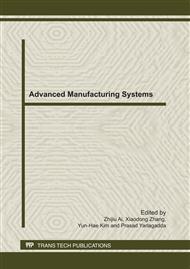p.257
p.261
p.265
p.271
p.276
p.283
p.287
p.291
p.295
Numerical Study on Three-Dimensional Wall Effects of Flat Micro Nozzle
Abstract:
The FLUENT6.1 software is applied to simulate the supersonic flow in micro convergent-divergent nozzle which is fabricated from flat silicon wafers. The simulation is complemented by parallel computing steady 2-D and 3-D Navier-stokes equations to study the three-dimensional wall effects on temperature and velocity inside the micro nozzle. Also the performances of fluent mass coefficients and thrust force efficiencies are studied. It is observed by the study that three-dimensional wall effects are not negligible in flat micro nozzle. The velocity of fluid in three-dimensional nozzle is less than the corresponding velocity of fluid in two-dimensional nozzle significantly, while the temperature of fluid in three-dimensional nozzle is much higher than the corresponding temperature of fluid in two-dimensional nozzle. The mass flow rate and thrust at the exit of 2-D nozzle are greater than the corresponding mass flow rate and thrust at the exit of three-dimensional. With the throat Renaults being increased, the corresponding differences between two-dimensional numerical results and three-dimensional numerical results decreased accordingly. Two-dimensional numerical results can not correctly predict the actual mass flow rate and thrust at the exit of micro nozzle.
Info:
Periodical:
Pages:
276-282
Citation:
Online since:
September 2011
Authors:
Price:
Сopyright:
© 2011 Trans Tech Publications Ltd. All Rights Reserved
Share:
Citation:


